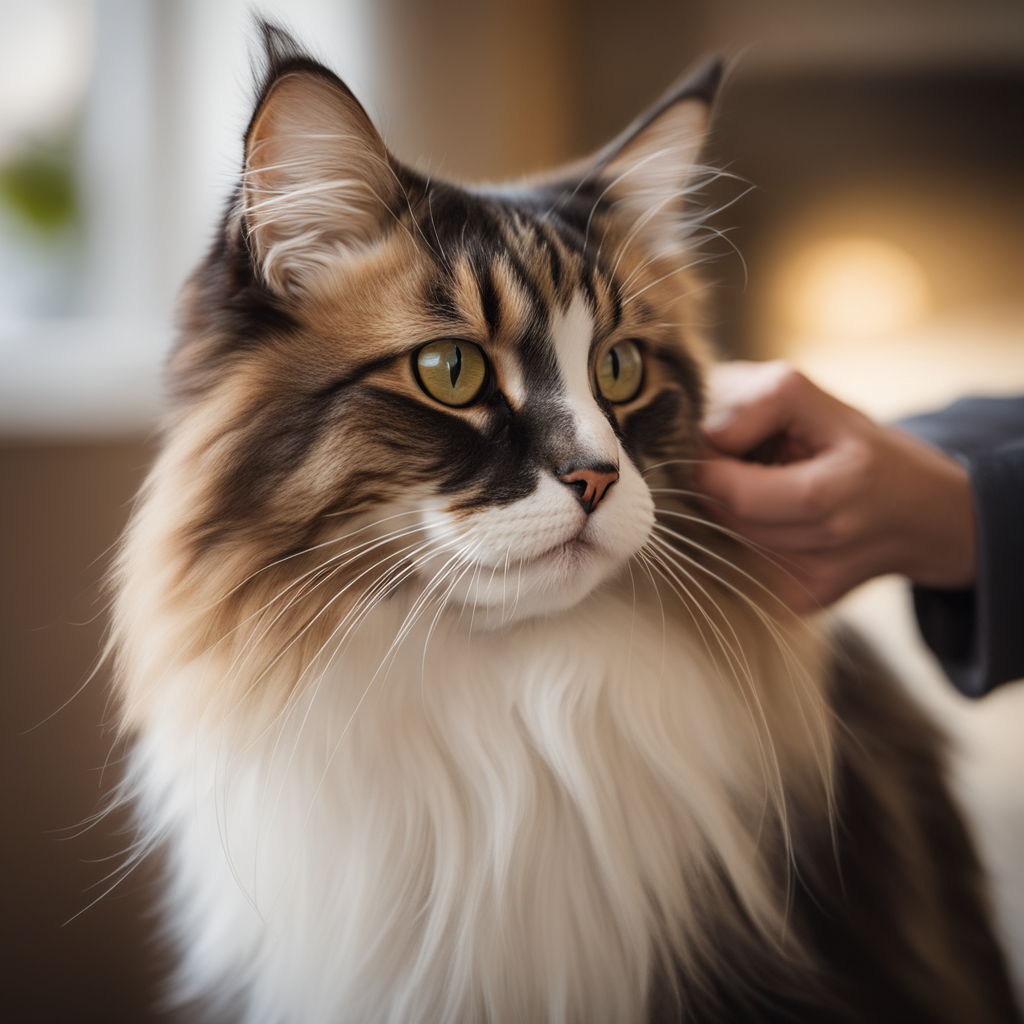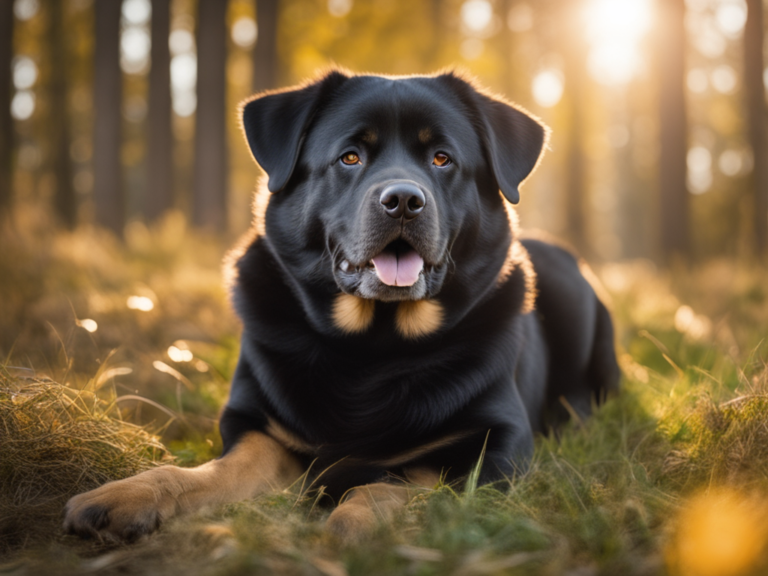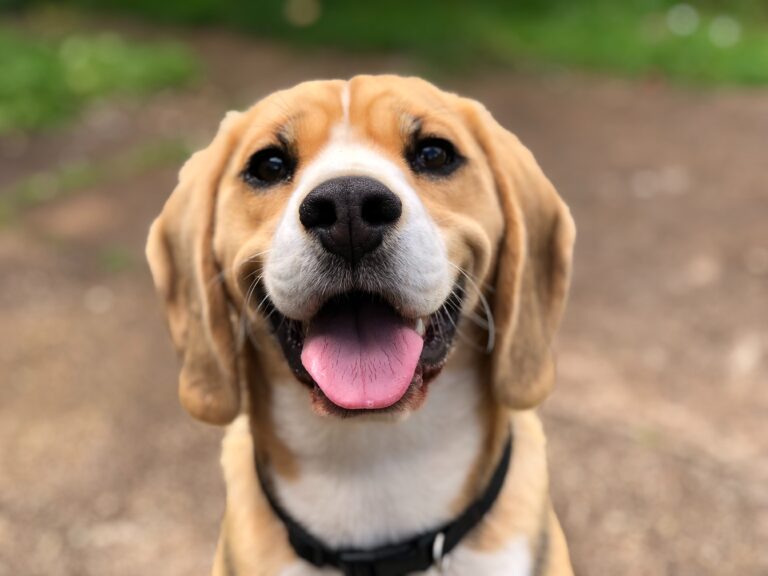What Is The Best Way To Groom A Long-Haired Cat

What Is The Best Way To Groom A Long-Haired Cat? Did you know that grooming a long-haired cat requires specific techniques to keep their fur healthy and free from mats and tangles? It’s not just about regular brushing, but also using the right tools and being patient during the grooming process. So, if you want to ensure your long-haired feline companion’s coat stays in top shape, you’ll want to discover the best way to groom them. From brushing techniques to dealing with mats and tangles, and even bathing tips, there’s a lot to learn. So, grab your wide-tooth brush and get ready to explore the world of long-haired cat grooming.
Importance of Grooming Long-Haired Cats
Regular grooming of long-haired cats is essential for their overall health and well-being. Taking the time to groom your furry friend not only keeps their coat looking beautiful, but also prevents the formation of mats and knots in their fur. These mats can be incredibly uncomfortable for your cat and may even cause pain. By regularly grooming your cat, you can ensure that their fur remains smooth and tangle-free.
In addition to preventing mats, grooming also plays a crucial role in maintaining the health of your long-haired cat’s skin. During the grooming process, you have the opportunity to thoroughly examine your cat’s skin for any issues or parasites. This not only helps to keep your cat’s skin healthy, but it also provides a chance for bonding and strengthening your relationship with your feline companion.
Another benefit of regular grooming is that it helps to spread natural oils throughout your cat’s coat. These oils are essential for maintaining the health and shine of their fur. By brushing your cat’s fur, you are distributing these oils evenly, resulting in a healthier and more lustrous coat.
Brushing Techniques for Long-Haired Cats
To effectively groom a long-haired cat, it is important to master the proper brushing techniques. Long-haired cats need regular brushing to prevent their fur from becoming matted and tangled. Start by using a wide-tooth brush to cover all areas of the cat’s fur, including the head, back, sides, butt, and belly. This will help to remove any loose hair and prevent matting. If you come across any mats or knots, use a shaving device, flea comb, or mat splitter to carefully remove them. Be gentle and take your time to avoid causing any discomfort to your cat. Once the mats are removed, use a fine-tooth comb to further brush the fur and remove any remaining loose hair.
In addition to regular brushing, you may also consider using optional products to help with grooming your long-haired cat. Detangling sprays can be used to make brushing easier and prevent tangles. Deshedding tools can also be beneficial for removing excess hair and minimizing shedding. When performing the final brushing, you can use grooming gloves or soft brushes to remove any additional loose hairs.
Establishing a routine grooming schedule is crucial for long-haired cats. This will help your cat become more comfortable with the grooming process and also ensure that their fur stays in good condition. Aim to brush your cat at least once a week, but adjust the frequency based on your cat’s specific needs. By following these brushing techniques and maintaining a regular grooming routine, you can keep your long-haired cat’s fur healthy, shiny, and tangle-free.
Tips for Dealing With Mats and Tangles
If your long-haired cat has mats or tangles, there are several tips and techniques you can use to safely and effectively deal with them. Mats and tangles can be quite uncomfortable for your cat, so it’s important to address them promptly. One of the first things you can do is use a wide-tooth brush to gently brush your cat’s fur. Start from the tips and work your way to the skin to prevent mats from forming. By doing this regularly, you can help keep your cat’s fur free from tangles.
In some cases, you may come across mats or knots that are more stubborn and difficult to remove. For these situations, you can use a shaving device, flea comb, or mat splitter. Be cautious when using these tools and make sure not to tug or pull on your cat’s skin. Take your time and gently work through the mat or knot to avoid causing any discomfort to your furry friend.
To prevent mats and tangles from forming in the first place, it’s important to regularly use a fine-tooth comb. This will help further brush your cat’s fur and remove any loose hair. Pay special attention to areas that are prone to tangles, such as behind the ears and under the armpits. By incorporating this into your grooming routine, you can minimize the chances of mats and tangles becoming a problem.
In addition to regular brushing, you may also consider using detangling sprays or deshedding tools before brushing. These products can help loosen mats and make grooming easier. However, it’s important to choose products that are specifically formulated for cats and are safe for them to ingest or come into contact with their skin.
If you find that your cat has severe mats that cannot be safely removed at home, it’s best to seek professional help. Professional groomers have the expertise and experience to handle difficult mats and may need to resort to shaving or specialized care to remove them. Remember, the comfort and well-being of your cat should always be the top priority when dealing with mats and tangles.
Bathing Your Long-Haired Cat
When it comes to grooming a long-haired cat, addressing mats and tangles is essential, and bathing your cat is another important aspect of their grooming routine. Bathing your long-haired cat not only keeps their fur clean and healthy but also helps to remove any dirt, oils, or odors that may have accumulated over time. To bathe your long-haired cat effectively, you will need a few grooming tools and follow some simple steps.
Firstly, gather all the necessary supplies before starting the bath. You will need a cat-specific shampoo, warm water, a towel, and possibly a hairdryer on a low setting. Make sure to choose a shampoo that is formulated specifically for cats, as human shampoos can be too harsh for their sensitive skin.
Next, wet your cat’s fur thoroughly, avoiding the face and ears. You can use a handheld sprayer or a cup to pour water gently over their body. Once their fur is wet, apply the cat-specific shampoo and gently massage it into the fur, making sure to lather it well. Be careful not to get any shampoo in their eyes or ears.
After shampooing, rinse your cat thoroughly to remove all the soap residue. It’s essential to rinse their fur completely to prevent any skin irritations. Use clean, warm water and ensure that there are no remaining traces of shampoo.
Finally, dry your cat with a towel or a hairdryer on a low setting. Long-haired cats may take longer to dry, so be patient and gentle during the drying process. Make sure not to use a high heat setting on the hairdryer, as it can harm their delicate skin.
Bathing your long-haired cat should be done as needed, depending on their lifestyle and personal hygiene. Some cats may require more frequent baths, while others may need them less often. Observing your cat’s behavior and appearance will help you determine when it’s time for a bath.
Choosing the Right Grooming Tools
To properly groom your long-haired cat, it is essential to choose the right grooming tools. Start with a wide-tooth brush for general brushing to remove tangles and mats. For removing loose hair, a fine-tooth comb works best. If your cat has resilient mats that cannot be removed with a comb, consider using a shaving device or clippers. Additionally, a flea comb with small teeth can be useful for gently loosening mats. Lastly, you may want to invest in a mat splitter, specifically designed for dismantling mats in long-haired cats. Alternatively, grooming gloves can be an effective tool for removing loose hair.
Essential Grooming Tools
Consider a wide-tooth brush for general brushing and a fine-tooth comb for effectively removing loose hair when choosing the essential grooming tools for your long-haired cat. The wide-tooth brush is ideal for gently untangling knots and removing surface debris from the fur. It helps to distribute natural oils throughout the coat, keeping it healthy and shiny.
The fine-tooth comb, on the other hand, is perfect for tackling mats and tangles. Its close-set teeth can easily penetrate the dense fur, removing loose hair and preventing the formation of mats. Additionally, you may need specialized tools like a shaving device, clippers, or mat splitter for more resilient mats. A flea comb with small teeth can be useful for gently loosening mats, while grooming gloves provide an alternative to brushes and combs for removing loose hair. Optional products like detangling sprays and deshedding tools can also enhance coat care. Make sure to choose the grooming tools that suit your cat’s specific needs and coat type.
Proper Brushing Techniques
Using the right grooming tools is essential for proper brushing techniques when grooming a long-haired cat. To effectively groom your long-haired cat, it is important to choose the right tools. A wide-tooth brush is ideal for general brushing, as it helps to remove loose hair and prevent matting.
For stubborn mats that cannot be removed with a brush, consider using a shaving device or clippers. A fine-tooth comb is also essential for removing loose hair and detangling any knots. Additionally, a flea comb with small teeth can be useful for gently loosening mats. If your cat has particularly resilient mats, a mat splitter specifically designed for dismantling mats in long-haired cats can be a valuable tool. Alternatively, grooming gloves can be used to remove loose hair and provide a gentle massage for your cat.
Trimming Long Hair
When it comes to grooming a long-haired cat, choosing the right grooming tools is essential for trimming their long hair effectively. To groom your long-haired cat, you will need a wide-tooth brush for general brushing and a fine-tooth comb to remove loose hair. These tools are crucial for preventing tangles and mats from forming in your cat’s fur. However, if your cat has resilient mats that cannot be removed with a comb, you may need to use a shaving device or clippers.
In some cases, a flea comb with small teeth can be useful for gently loosening mats. Additionally, consider using a mat splitter, specifically designed for dismantling mats in long-haired cats. Grooming gloves can also be an alternative to brushes and combs for removing loose hair. By choosing the right tools, you can groom and trim your long-haired cat’s hair effectively.
Paying Attention to Problem Areas
Regularly checking problem areas such as behind the ears, tail, hips, groins, and underarms for mats and knots is crucial when grooming a long-haired cat. These areas are prone to tangling due to the friction caused by movement and the accumulation of dirt and debris. By paying close attention to these problem areas, you can prevent mats from becoming larger and more difficult to handle.
When grooming these problem areas, it is important to be mindful of your cat’s body language. Cats may show signs of discomfort or distress when you touch sensitive areas. If your cat displays any signs of discomfort, such as hissing, growling, or trying to escape, it is best to stop grooming and give your cat a break. Pushing through grooming despite their discomfort can lead to a negative association with grooming in the future.
To make grooming in problem areas easier, you can use thinning shears to gently thin the fur. This will allow better access to the tangled hair and make it easier to comb through. Remember to be patient and use positive reinforcement during grooming sessions. Offer treats and praise to create a positive experience for your cat, which will make future grooming sessions more enjoyable for both of you.
If your cat has severe mats in problem areas that are challenging to handle, it may be best to seek professional grooming assistance. Professional groomers have the experience and tools to safely remove mats without causing any harm to your cat. They can also provide advice and guidance on how to prevent future matting.
Preventing and Managing Hair Matting in Cats
To prevent and manage hair matting in cats, it is essential to establish a regular grooming routine. Long-haired cats are particularly prone to matting due to their dense and abundant fur. Regular brushing is the key to preventing mats and tangles from forming. Use a wide-tooth brush to comb through your cat’s fur, starting from the roots and working your way to the ends. This will help to remove any loose hairs and prevent them from getting tangled. Additionally, a fine-tooth comb can be used to gently remove any mats that have already formed.
Incorporating optional products such as detangling sprays can also aid in preventing hair matting. These sprays help to loosen any knots and make them easier to comb out. When using a detangling spray, be sure to follow the instructions carefully and avoid spraying it directly into your cat’s eyes or ears.
For resilient mats that cannot be removed with a comb, it may be necessary to use a shaving device or clippers. However, extreme caution should be exercised when using these tools, as they can easily cause injury to your cat if not used properly. It is advisable to seek the assistance of a professional groomer if you are unsure about using these tools yourself.
Bathing your long-haired cat with cat-specific shampoo and warm water can also help to prevent mats and tangles. Be sure to thoroughly rinse all the shampoo out of your cat’s fur to avoid any residue that could lead to matting. After bathing, gently pat your cat dry with a towel and brush through their fur to prevent any tangles from forming as it dries.
Patience and Gentle Handling During Grooming
After preventing and managing hair matting in your long-haired cat, it is important to approach grooming sessions with patience and gentle handling to create a positive experience for your furry friend. Grooming can be a stressful experience for cats, especially those with long hair, so it is crucial to approach it calmly and avoid rushing. Allow your cat to adjust to the process at their own pace.
When grooming your long-haired cat, use gentle strokes and soft, soothing verbal reassurance to keep them calm and relaxed. Start by gently brushing their fur, being mindful of any tangles or mats. Use a comb or slicker brush specifically designed for long-haired cats to prevent discomfort. Be patient as you work through any tangles, taking care not to pull or tug on the fur.
As you groom, regularly monitor your cat’s body language for signs of discomfort or stress. If they become agitated or start showing signs of distress, it is important to take a break and give them time to relax. This will help ensure a gentle grooming experience and prevent any negative associations with the process.
After each grooming session, be sure to reward your long-haired cat with treats and praise. This will help reinforce positive associations with grooming and make future sessions easier. Remember, patience and gentle handling are key when grooming a long-haired cat. By creating a positive experience, you can help ensure that grooming becomes a pleasant and bonding activity for both you and your furry friend.
Trimming Your Long-Haired Cat’s Fur
When trimming your long-haired cat’s fur, it is important to use the proper tools and techniques to ensure a precise and safe grooming experience. Start by using a wide-tooth brush to brush your cat’s fur, covering all areas including the head, back, sides, butt, and belly. This will help to remove any tangles or mats that may be present. If you come across any mats or knots that cannot be brushed out, it is best to remove them using a shaving device, flea comb, or mat splitter. Be sure to be gentle and patient when removing these mats to avoid causing any discomfort or pain to your cat.
After removing any mats, use a fine-tooth comb to further brush your cat’s fur and remove any loose hair. This will help to keep your cat’s fur looking neat and prevent tangles from forming. Be sure to comb in the direction of hair growth to avoid pulling on your cat’s skin.
Once you have finished combing, use a grooming glove or a soft brush for a final brushing to remove any additional loose hairs. This will help to leave your cat’s fur looking smooth and shiny.
If your cat’s fur tends to get tangled easily, you may consider using optional products such as detangling sprays or deshedding tools. These products can help to make the grooming process easier and more comfortable for your cat.
Tips for Maintaining a Healthy Coat
Regular grooming is essential for maintaining a healthy coat on your long-haired cat, ensuring their comfort, and preventing any potential skin issues or parasites. By regularly grooming your cat, you can prevent mat and knot formation, which can cause discomfort and pain for your feline friend. Grooming also helps to spread natural oils throughout the coat, keeping it healthy and shiny.
To effectively groom your long-haired cat, it is important to implement a routine grooming schedule. Consider using detangling sprays or deshedding tools to provide extra care for the coat. Wide-tooth and fine-tooth combs are great for gently removing tangles and mats. Shaving devices can be used for more severe matting, but be cautious to avoid injuring your cat’s skin. Flea combs or mat splitters can also be helpful tools in your grooming routine.
In addition to regular brushing, bathing your long-haired cat every month or month and a half can help prevent tangles and mats. Use a cat-specific shampoo and conditioner to keep the coat clean and soft. It is important to dry your cat thoroughly after bathing to avoid any potential skin issues.
Don’t forget about your cat’s nails! Regular nail trimming is essential to prevent overgrowth, which can cause discomfort for your cat and damage to furniture or other surfaces.
Professional Grooming Options for Long-Haired Cats
Consider seeking professional grooming services for your long-haired cat to ensure they receive thorough and expert care. Professional groomers have the expertise and tools to safely and effectively manage mats and knots in long-haired cat fur. Long-haired cats are prone to developing mats, which are tangles of loose hair that can be uncomfortable and even painful for your feline friend. These mats can also trap dirt and debris, leading to skin irritation and potential skin infections. A professional cat groomer knows how to gently and skillfully remove these mats without causing any harm to your cat.
In addition to managing matted fur, professional groomers can provide specialized services such as de-matting, de-shedding, and coat conditioning tailored to long-haired cat breeds. They have access to high-quality shampoos, conditioners, and detangling treatments that can help maintain a healthy and shiny coat. Professional groomers also have the knowledge to identify any skin issues or abnormalities that may require veterinary attention.
Taking your long-haired cat to a professional groomer can offer many benefits. Not only will your cat receive a thorough grooming session, but they will also have a stress-free and comfortable experience. Professional groomers are trained to handle cats with care and can create a calm and soothing environment. This is especially important for cats that may be anxious or fearful during grooming sessions.
What Is The Best Way To Groom A Long-Haired Cat Frequently Asked Questions
How Should Long-Haired Cats Be Groomed?
To groom your long-haired cat, start by using wide-tooth brushes and fine-tooth combs to prevent matting and tangles. Recommended tools include detangling sprays and gloves. Consider professional grooming services for expert care.
Is It OK to Trim a Long-Haired Cat?
Yes, it’s okay to trim a long-haired cat’s fur. Trimming techniques, such as using grooming scissors, can help manage mats and prevent discomfort. Regular grooming with the right tools is beneficial, but seek professional advice for alternative methods.
How Often Should Long-Haired Cats Be Bathed?
Long-haired cats should be bathed every 4-6 weeks to prevent matting. Regular brushing with appropriate grooming tools helps remove loose hair and prevent mats. After bathing, use proper drying techniques to avoid skin irritation.
Can You Use Clippers on a Long-Haired Cat?
Using clippers on a long-haired cat requires caution and proper technique. Trimming specific areas or dealing with matted fur can be done, but seek professional guidance or tutorials first. Prioritize your cat’s safety and comfort.
Conclusion
In conclusion, grooming is essential for maintaining the health and appearance of long-haired cats. By using the right techniques and tools, such as wide-tooth brushes, fine-tooth combs, and grooming gloves, you can effectively remove mats, tangles, and loose hair from your cat’s fur. Regular grooming sessions and monitoring of the cat’s skin health are important for their overall well-being. Remember to be patient and gentle during grooming and consider professional grooming options for additional care.








